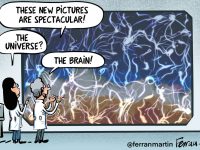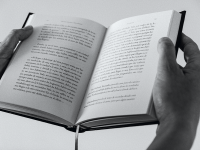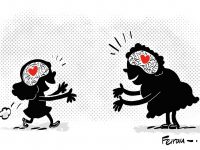
For the vast majority of people, sleeping in bed is a pleasant and relaxing activity. However, for some people, this nocturnal activity can become a frightening experience, especially for those who are unaware of the cause of what they are experiencing. So much so that various paranormal events, legends and spooky tales (such as various types of monsters appearing in the darkness of the bedroom) are actually the result of the peculiar way our brains work during the time when the boundary between sleep and wakefulness is blurred.
Sleep causes significant changes in brain activity compared to periods when we are awake. For example, during REM (rapid eye movement) sleep, emotions arise. They can be intense, and the more rational side of the brain, the prefrontal cortex, has a low level of activity. What does this mean? That when we dream, the area responsible for higher, complex cognitive tasks is inhibited, which contributes to the emergence of fantasies that are far removed from reality, and to the lack of coherence and logic that is typical of dreams.
This peculiar brain activity leads some people, at some point (or points, although this is much less common), to experience hallucinations shortly before entering the world of dreams or shortly after waking up. These unreal perceptions can be tactile, auditory or visual, and can be extremely varied and strange: feeling someone grabbing a part of your body, seeing a strange presence in the room, hearing unintelligible whispering…
As might be expected, those who have these experiences may feel uneasy at best and terrified at worst, depending on the nature and intensity of the hallucinations. In the limbo between wakefulness and sleep, these people are unable to realise that what they are perceiving does not actually exist, that it is a dream-like manifestation created by the brain that is infiltrating the real world.
Another frightening phenomenon that can occur in this sleep/wake state, and which can also be associated with hallucinations (as if those were not terrifying enough), is sleep paralysis. It is not an uncommon occurrence: about half the population has experienced it at some point in their lives. However, very few people experience it repeatedly.
Sleep paralysis occurs when a person has just woken up from or is entering REM sleep, but their muscles are relaxed as if they were in full REM sleep. This results in the person being awake for a few tense minutes (usually between one and three), but unable to move any part of their body. Fortunately, after this time, the paralysis disappears without further problems.
Unfortunately, sleep-related trauma does not end with paralysis and hallucinations. Around 40% of children and 2% of adults suffer from night terrors, which occur during the non-REM phase of sleep, usually in the first half of the night, and typically last around ten minutes. Night terrors differ from nightmares in that, as well as experiencing panic and terror during sleep, people with night terrors may open their eyes and stare, scream and kick, and be very agitated and aggressive. Sometimes the nightmares are associated with sleepwalking. On the positive side, people who experience night terrors usually remember absolutely nothing the next morning.





